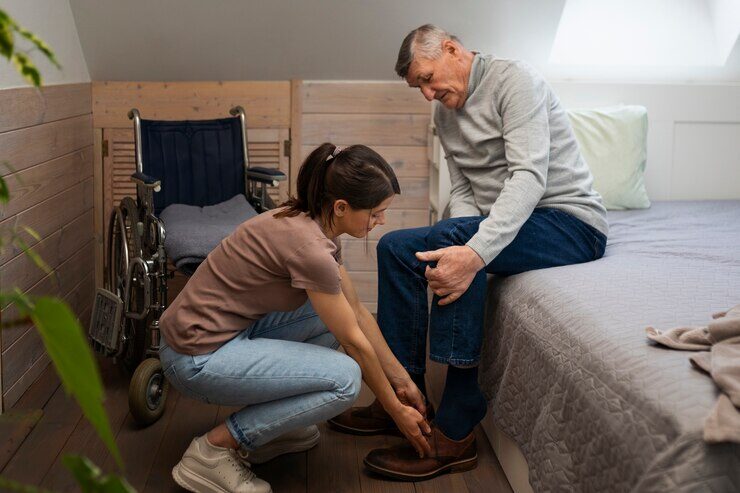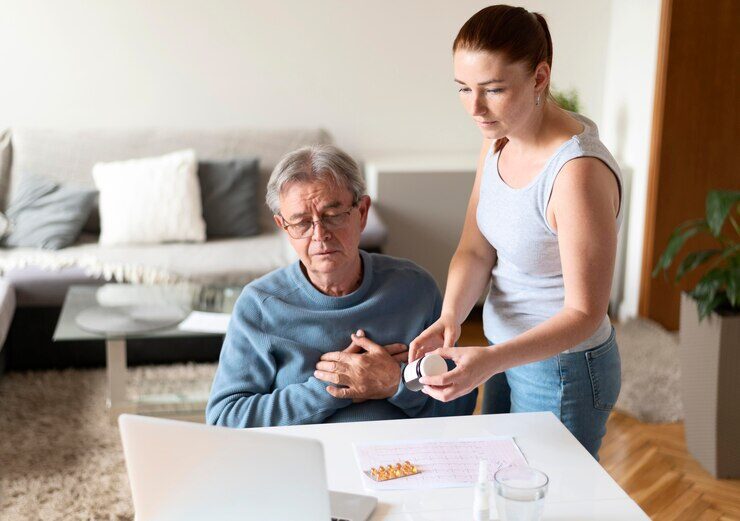Stroke Care Essentials: How to Support Recovery at Home

Stroke recovery is a challenging time for both survivors and caregivers as it can cause multiple physical, mental, and emotional complications due to brain damage. Nearly one in three stroke survivors experience depression along with anxiety, apathy, and frustration, which can seriously slow the recovery process and make daily life more difficult to manage.
However, recovery can be more manageable with the right support system at home. Unlike clinical settings, the home offers a comfortable environment where survivors can recover at their own pace without the stress of unfamiliar routines or conditions. Family members can use an effective approach to help with daily activities, provide emotional support, and implement a structured care plan to support recovery.
If you are someone who will be providing stroke care for a loved one, starting a career in caregiving, or simply want to enhance your skills, keep reading to learn more about how to care for a stroke patient at home.
Essential Stroke Care Strategies at Home

1. Give Emotional Support
Emotional support is crucial in the post-stroke recovery process, as stroke survivors sometimes experience emotional and psychological challenges due to changes in brain function. Here’s how you can provide effective emotional support to your loved ones:
- Promote Neuroplasticity Through Positive Reinforcement: Stroke rehabilitation depends on neuroplasticity, the brain’s ability to rewire itself. Specific forms of positive support, such as verbal praise, gentle encouragement, and active involvement in therapy sessions, can activate the brain’s reward system, helping the formation of new neural pathways. Also, celebrating small achievements—like completing a new exercise, standing for a few seconds longer, or successfully performing a daily task—triggers dopamine release, which enhances learning and increases motivation for continued progress.
- Manage Emotional Lability (Pseudobulbar Affect): Stroke patients can experience emotional lability, leading to sudden outbursts of laughter or tears due to damage in brain regions controlling emotional responses. Caregivers should understand that these reactions are involuntary and help the patient manage such emotions through therapy and support instead of reacting negatively.
- Reduce Stress Hormone Levels: Chronic stress can increase cortisol levels, negatively impacting both emotional and physical recovery. By maintaining a calm, stable environment, you can help lower the patient’s stress, which in turn promotes healing and improves overall well-being.
2. Encourage Daily Rehabilitative Exercise
Here are some of the exercises that you should tell your loved ones to perform on a daily basis:
- Range of Motion (ROM) Exercises: Stroke survivors usually experience joint stiffness or muscle tightness (spasticity). Therefore, arm lifts, shoulder rotations, ankle circles, and gentle leg stretches can help prevent contractures (permanent stiffness), improve flexibility, and help restore movement in paralyzed or weakened limbs. They also support muscle memory and aid in rebuilding coordination.
- Balance Exercises: Balance is often impaired after a stroke, which increases the risk of falls. So, encouraging them to stand on one foot (with support if needed), heel-to-toe walking or side leg raises. These exercises train the brain and muscles to work together more effectively, improving stability and coordination. Better balance helps survivors with walking, standing, and transitioning between positions.
3. Look Out For Signs Of Another Stroke
Stroke patients are at a higher risk of experiencing another stroke. Familiarize yourself with the warning signs using the acronym BE FAST:
- Balance: Sudden loss of balance or coordination.
- Eyes: Sudden vision problems in one or both eyes.
- Face: Facial drooping on one side.
- Arms: Weakness or numbness in one arm.
- Speech: Slurred speech or difficulty speaking.
- Time: Call emergency services immediately if you observe these symptoms.
Call emergency services immediately if you observe these symptoms.
4. Consider Making Home Modifications
In stroke home care, assess your home for safety and make necessary changes to adapt to mobility challenges and reduce the risk of falls for stroke survivors. Common modifications that you can do include installing grab bars in bathrooms, adding ramps for easier access, and removing tripping hazards like loose rugs or cluttered walkways. Wider doorways and stair lifts may also be beneficial for those with limited mobility. These adjustments create a safer, more accessible living environment, making daily tasks easier and improving the overall quality of life for your loved one during recovery.
5. Give a Balanced And Healthy Diet
Nutrition is crucial in stroke recovery. Make sure your loved one consumes a balanced diet that includes plenty of fruits, vegetables, whole grains, and lean proteins. Plan a diet to solve any underlying health conditions, like hypertension or high cholesterol, which could have contributed to the stroke. For example, limit sodium, unhealthy fats, and processed foods to help manage blood pressure and cholesterol levels. A well-planned diet not only aids in physical recovery but also reduces the risk of another stroke by promoting overall cardiovascular health.
6. Measuring Progress
Improvements in areas like mobility, speech, or performing daily tasks can show that rehabilitation efforts are paying off. Keeping a journal to document these changes provides a clear picture of their development over time and helps identify areas needing more focus. This practice can also motivate both the caregiver and the person recovering, reinforcing the positive impact of their hard work and encouraging continued efforts in recovery.
How to Find the Right Home Care Services for Stroke Patients
Those who are unable to care for stroke patients by themselves need someone to do so for their loved ones. At Family Ties Home Care LLC, our trained caregivers are dedicated to providing home care for seniors, adults, and other stroke patients, offering both long-term and short-term support. Our compassionate caregivers design personalized care plans that include grooming, meal preparation, and emotional support, all aimed at enhancing the quality of life and facilitating recovery in a familiar environment. Visit our website to discover how we can help your loved ones regain their independence.
Wrapping Up
When providing home care for stroke patients, don’t hesitate to ask for help from family, experts, and the right resources. With patience, dedication, and proper guidance, home care can offer a safe, comfortable space for stroke survivors to regain their independence and improve their quality of life. If you need any help, you have our support team ready to assist you.
